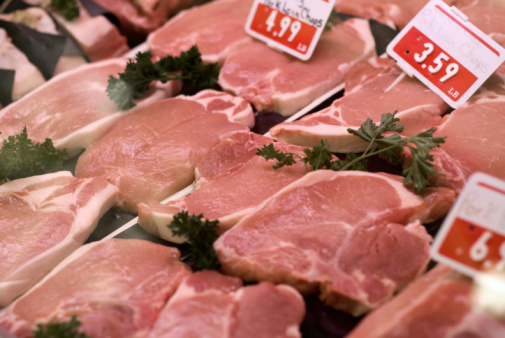Nutrition 101: Carbohydrates
Mood and mental condition are strongly influenced by ones nutrition and general health. Many people believe they are experiencing unpleasant mental states solely because of what has happened in their lives in the past, or because of the situations they are dealing with in the present. In many cases, they would do well to look at what they are experiencing in their life from another point of view. It is your personal resources at any one time that determine how things affect you and how well you are able to deal with them. Your physical and mental health are some of the most important resources you bring to any situation. Being unable to deal with life’s challenges because of poor physical and mental health may very well be the reason people are driven to use alcohol and drugs. Anyone desiring to avoid the need to resort to drugs, or to stay drug free after a period of use, should make achieving excellent physical and mental health a priority.
This can be much more easily accomplished, of course, once one has the knowledge required to select health-promoting nutrition. I want to stress that many people completely underestimate the importance that nutrition plays in ones life. Today, scientists, for example, are finding that certain additions to a person’s diet can alleviate very serious mood and mental disorders.
I want to emphasize this even more by saying that what one chooses to eat is a major influence of the quality of life you will lead. Many degenerative conditions, which are often seen as part of the natural progression of the aging process in our society, can be avoided, and even alleviated after they have occurred, simply by improving ones nutrition. If you eat poorly, you will not just be, not making yourself more healthy, but you will actually be making yourself sick. What you choose to eat each day has a profound influence on the quality of your life and your longevity.
One of the greatest influences on your health is the amount of insulin you are secreting in your body. And the major determining factor of this is the kind and the amount of carbohydrates you eat every day. That is why any program to improve your health must begin with your gaining a thorough understanding of carbohydrates. Fats, such as olive oil, and protein, such as meat, fish, fowl, and eggs, are not carbohydrates, and don’t induce much insulin secretion, and will not concern us in this part of this article.
Carbohydrates are usually classified as being of one of two types. The first is called Simple because its chemical structure is actually simpler than the others, and it is thought to be more easily digested than the other type, which is called complex. Simple carbohydrates are sugars such as sucrose, fructose, the sugar in milk called lactose, and the sugar in beer called maltose. They are sweet to the taste. Complex carbohydrates are starch and fiber, and are found in vegetables and grains, and are not as sweet as the simple carbohydrates. They are more complex structurally and are thought to be digested more slowly. However, more careful scientific evaluation has shown this idea to be false.
Please note, part of what are considered complex carbohydrates in food is the indigestible fiber that does not ever turn into blood glucose. For the purposes of this discussion we will not be referring to this indigestible part of the total carbohydrates in our following discussion as it plays no active role in raising blood glucose and stimulating the production of insulin in the body.
The glycemic nature of a food tells us how quickly any food is digested and becomes glucose in the blood. All sugar in the blood is in the form of glucose and if it gets too high we can become ill and even die. So if a food makes the blood glucose rise too quickly, insulin is generated in the body to remove the sugar from the blood, first filling up the storage areas in the muscles, to be used for energy for the muscles, and if there is even more blood sugar, to remove this further excess of glucose and store it in the body as fat. The more sugar in the blood, the more insulin produced and the stronger the body is driven to store excess blood sugar as fat. If you eat foods that are high glycemic foods, they will be digested quickly and raise the level of blood sugar quicker and higher, and the higher your blood sugar is, the more insulin you will produce, and the more insulin you produce, the more of what you eat will be stored as fat in your body. Lower glycemic foods are digested slower and raise the blood sugar more gradually, so that less insulin is called for to regulate blood glucose levels.
But the Glycemic index of a food is not determined by whether a food is a simple or complex carbohydrate. The reason is that each food is made up of a unique mixture of chemicals, and it is the chemical nature of a food, and how the body’s digestive system is able to process the particular mix of chemicals of each food, that determines whether the food will be easily and more quickly digested, or more difficultly digested over a much longer time; or, in other words, whether each food will be a high or low glycemic food. For example, it is easier for the body to digest a baked white russet potato than sucrose, which is common table sugar. You would think, that the starchy material of a potato, a complex carbohydrate, would naturally be much harder to digest and have a lower glycemic index than a simple sugar like sucrose, that seems to just melt in your mouth, but you would be completely wrong. The reason is that it is easier chemically for the body’s digestive system to turn a potato into glucose, than it is for the same system to turn sucrose, one type of sugar, into glucose, another type of sugar.
Given this, there are other factors that can play a strong role in determining the ultimate glycemic index of a food. For example, cooking can have a great influence on some foods. Cooked brown rice remains relatively unchanged compared to the starch grains in a baked potato, which swell up and become very easily converted to glucose sugar in the body. This partly explains why a starchy complex carbohydrate such as a baked potato can be even worse than table sugar.
This is not to say that table sugar is good for you. Sugar is nutritionally worthless empty food having little vitamins and minerals and it is full of fattening calories. In addition, sugar creates cycles of emotional highs and lows, and is chemically addictive. Sugar, along with refined flour and white potatoes, leads to a fast rise in blood glucose and generates unhealthy amounts of insulin in the blood. For this reason, foods with added sugars are best avoided in ones regular diet. In general, it is best to generally avoid consuming foods with any of the following items in their ingredient list: sugar, corn syrup, fructose, high fructose corn syrup, honey, sucrose, maltodextrin, dextrose, molasses, rice milk, almond milk, white grape juice, fruit juice sweetened, brown rice syrup, maple syrup, date sugar, cane sugar, corn sugar, beet sugar, succanat and lactose.
And remember that aspartame, found in most diet sodas in place of sugar, suppresses serotonin production in the brain and so it can lead you to consume more overall calories than a regular soda would.
Even the type of processing of a food item before it is cooked can have a serious effect on its Glycemic Index. Oats are a good example. A steel-cut, minimally processed oat has a lower Glycemic Index than a rolled oat, which has a lower Glycemic Index than instant oatmeal which has been further processed to become edible with a shorter cooking time. When grains are processed the hard to digest outer coating is broken up or even removed. Brown rice has a lower Glycemic Index, being more unprocessed, than white rice, a more processed food. But all rice should be severely limited as you will learn later. The more a food is rolled, ground or smashed, the higher is its Glycemic Index. It also is true that the higher the overall fiber that occurs in each food the lower the Glycemic Index. For example, beans and legumes have more fiber than white flour.
Fat slows down the rate of digestion, and thus lowers the Glycemic Index of food. Of course, you do not want to take in too much fat, and especially those that are bad for your health. But on the other hand, all those processed carbohydrate foods that claim to be very low fat, or even non-fat and fat-free, have a raised Glycemic Index over regular products made with the usual amount of fat in their recipe. Thus, they are more likely to raise your insulin, have you store fat, and increase the factors leading to diabetes and obesity. (Of course, you will also want to choose products that are not made with unhealthy hydrogenated or partially hydrogenated fat. This can easily be done by buying from the health food section of your grocery, or doing most of your shopping in a health food store.)
The Glycemic Index of a food provides useful information to help guide ones food selection. However, it does not tell us the whole story. It does not tell us the amount of carbohydrates per serving. Another way to think if this is: what is the carbohydrate DENSITY of each food? GLYCEMIC LOAD takes into consideration, not only the Glycemic Index of foods, but its carbohydrate density as well. It is the Glycemic index of a food, times its carbohydrate content in grams per serving. (Most charts divide the Glycemic number by 100, then multiply.) The higher the Glycemic Load the more easily-digested carbohydrates are present to raise blood sugar and stimulate secretion of unhealthy amounts of insulin.
In general, with some important exceptions, you should remember the following:
GRAINS HAVE A HIGH CARBOHYDRATE DENSITY
FRUITS HAVE A MEDIUM CARBOHYDRATE DENSITY
VEGETABLES HAVE A LOW CARBOHYDRATE DENSITY
Starchy vegetables belong with Grains because of their high carbohydrate density, so think of POTATOES as having a high carbohydrate density.
Now let’s take a look at how this can be applied.
Carrots & Potatoes both have a high Glycemic Index, but using Glycemic Load, carrots move much lower, while potatoes stay high because of high carbohydrates per serving. In other words, Potatoes have a much higher density of digestible carbohydrates than Carrots, which contain a lot of indigestible fiber in the volume of a serving. The portion of baked potato supplies the body with 37 grams of carbohydrates, while the same portion of carrots supplies only 16 grams.
Foods that are mostly water or air will not cause a steep rise in blood sugar, even if their Glycemic Index is high. So for example, watermelon, which has a high Glycemic Index, is mostly water, and thus has a low Glycemic Load. Even though air popped corn has a lower Glycemic Load than regular corn kernels, corn is a grain and not a vegetable, and so it must be eaten in restricted amounts just as any other grain. Nuts, by the way, have a low Glycemic Load, but their fat content makes them high calorie foods that need to be eaten in moderation when trying to lose weight.
Starchy foods such as white rice and brown rice, white flour, bread, pasta, and potatoes, heavily contribute to consuming an unhealthy Glycemic Load. Heavily sweetened foods, such as canned fruit with sugared syrup, have a high Glycemic load and need to be avoided. Legumes have an average Glycemic Load. Dairy products have a low Glycemic Load, but to stay at that level it is necessary to avoid ones with added sweeteners, like most fruit flavored yogurts. While many fruits have a low to moderate Glycemic Load, many dried fruits, especially dried dates, figs, and raisins, have a high Glycemic Load. Of all the fresh fruits, bananas should never become a regular part of your diet, as they are a high Glycemic Load food.
High Glycemic Load promotes weight gain and body fat, and is associated with increased risk of heart disease and diabetes. On the other hand, avoiding High Glycemic Loads and having a smaller rise in blood sugar can help control established diabetes.
It would be good to seek out and purchase a Glycemic Load Chart of various foods in a book form like the ones for Carbohydrates, Fiber, and Fats. In the meantime let’s look a little further at some common foods to get an even better idea of the role Glycemic Load plays in a person’s diet. A cup of watermelon and a cup of raisins both have a fairly high glycemic index, but the cup of watermelon is mostly water and has a moderate Glycemic Load, while the cup of raisins has about ten times the Glycemic Load and can only be described as having an astronomical Glycemic Load. You can see how sitting around munching on raisins can be bad for your health. As a matter of fact, parents who put a box of raisins in their children’s lunch each day would be better off giving them a piece of fresh fruit.
Bread is a high Glycemic Load food, and the popular bagel is one of the worst. Brown rice has a high Glycemic Load, but white rice is even worse. Pastas have a high Glycemic Load, so they should become an infrequent treat, not a regularly eaten food.
Health and Glycemic Load are closely related. The faster carbohydrates are digested and the greater the amount of those carbohydrates, the more glucose enters the bloodstream at any one time. The more blood glucose is raised the more insulin is generated. Since insulin blocks fat burning, promotes fat storage, and increases production of triglycerides, which are a risk marker for heart disease, too much insulin leads to health problems. Several new studies have linked high carbohydrate diets, particularly those with high glycemic loads, to heart disease, as well as certain cancers, diabetes, and obesity.
One of the Food Pyramids asks you to eat a lot of bread, rice, pasta and potatoes, and leads people to consume an overall high Glycemic Load. Thus, this Food Pyramid is not health promoting according to the Glycemic Load principles, and needs to be revised. At the very least, you, yourself should now apply these Glycemic Load principles to eat better, and lead a much healthier life.
Until you purchase a reference book listing foods and their Glycemic Load, you can use the information available to you right on each food’s package to guide you to make better nutritional choices. Remember that fiber is technically considered a carbohydrate because of its chemical structure. But because it is indigestible, it cannot be turned into glucose and stimulate the production of insulin in the body. The Nutrition Facts on each package of food lists “Total Carbohydrates,” which is the non insulin promoting fiber carbohydrates added to the insulin promoting carbohydrates. It also lists the non insulin promoting fiber separately as “Dietary Fiber.” To find out the number of insulin generating carbohydrates in a portion of food, you need only subtract the “Dietary Fiber” grams from the “Total Carbohydrates” grams, which will leave you with only those carbohydrates which can generate insulin in the body.
Now let’s see how you can apply this. If a standard portion of Food A has 25 grams Total Carbohydrates and 20 grams Dietary Fiber, then subtracting 20 from 25, leaves us with only 5 grams of insulin generating carbohydrates in a portion of that food. If a similar portion of Food B has 25 grams Total Carbohydrates and 5 grams Dietary Fiber, then subtracting 5 from 25, leaves us with 20 grams of insulin generating carbohydrates. That’s right, even though they both had 25 grams of Total Carbohydrates in a portion on the Nutrition Facts label, Food B had 4 times the insulin generating carbohydrates. And remember, higher fiber usually means a lower glycemic index, so in general you can expect a high carbohydrate product with low dietary fiber to have the potential to generate large amounts of insulin.
In practice, it is very simple and quick. First you should take a look at the Total Carbohydrates and Dietary Fiber on many of the products you regularly buy. That will give you an idea of the range of the amounts of carbohydrates and fibers found in many products. Now you are ready to make an intelligent decision regarding the purchase of a food product. If the Total Carbohydrates are high, take a look at the Dietary Fiber. If it’s low then you want to avoid including that product in your diet as it will generate a lot of insulin in your body.
Though you now know how to get an idea of the Glycemic Load of a food on your own, it is preferable that you eventually seek out and use a comprehensive printed Glycemic Load chart as a guide for your food purchases in the market.
In the next section of this article, I will discuss replacing harmful fats in your diet with health-promoting ones, and tell you how to choose the right fats. Nutrition: Fats
-
Beginning The Weight Loss Journey: Everything You Need To Know To Lose Weight Fast
There are a lot of ways you can lose weight. To learn which ones
-
Exercise and Fat Loss ?Effective Steps to Successful Fat Loss
Exercise and fat loss may not be as easy
-
The Whats Whys And Hows Of Weight Loss A StepByStep Process To Ensure Weight Loss Success
Everybodys weight loss journey is different - some folks struggle with
-
Eat Less In 5 Steps
(BlackDoctor.org) — If you were to vote on the top
-
Hypnosis Can Slim the Body By Slimming the Mind
Our world bases self worth on the size of the waist. For many peopl
-
How I Personally Used These 3 Hot Tips to Sculpt a Set of Washboard 6 Pack Abs - Get Quick Results
Are you tired of feeling like youre the only person at the beach wi
- DON'T MISS
- How To Lose Weight Without Risking Your Health!
- Fantasia: How She Had To Lose To Win
- The 100 Calorie Diets Top 100 Fat Fighting, Fat Burning, Fat Melting And Fat Flushing Foods
- Fire up Your Metabolism and Wave Excess Weight Goodbye
- Stop Doing the Impossible
- Losing Weight - Japanese Style
- Are ‘fitness foods’ making you fat?
- How To Avoid Being A Slave To Your Scale
- Kiwi -The Next Big Super Fruit
- Is you who suffer from fat?




